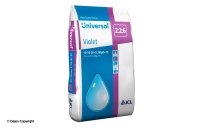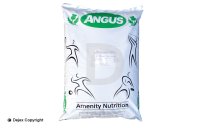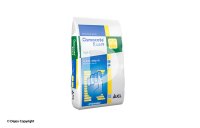‘Potash’ refers to mining or manufacturing salts that contain potassium, which is one of the three macronutrients needed for optimal plant health.
Potash is the seventh most common natural element and plays a crucial role in crop fertilisation. Plants that have a lack of potassium will often have low quality flowers and fruits, and may also appear dry with curled or crinkled leaves. Although the methods for collecting potassium have changed over time, the role high potash fertilisers play in horticulture has remained similar for centuries.
How do high potash fertilisers work?
Potassium is vital for water uptake and for synthesising plant sugars when used in food. Many growers use high potash fertilisers to promote better crops that produce more flowers and higher quality produce.
When you use a high potash fertiliser, the increased amount of potassium helps flowers and fruit to form and toughen, which in turn enables them to better resist pests, diseases and extreme weather conditions. This type of fertiliser is also particularly useful in creating healthy green lawn grass.
If your soil has a natural deficiency in potassium – which it may do if, for example, it has a higher sand content – high potash fertilisers can provide the additional nutrients your plants need to thrive.
How to use high potash fertilisers
Plants can only take in potash when they’re in active growth. The soil will also need to be moist so they can draw the nutrients up through their leaves. This means that the best time to use this type of fertiliser is from early spring to late summer, during the key growing months, or what is referred to as the ‘generative’ phase.
Potash doesn’t move into the soil profile more than around 2.5cm before it becomes immobile, so it’s important that you consider how to work it into the root zone of your plants. For most soil types, annual applications can be entirely sufficient for the health of your plants – but if you have quite sandy soil, it’s worth using additional organic fertilisers to give your crops the best chance of success throughout the year.
This type of fertiliser will usually come in either liquid or granule/powder form, both of which can be used effectively to help improve the quality of your crops. It’s worth noting that potash fertiliser increases the pH in soil, so should not be used for plants that prefer a more acidic environment, such as hydrangea and rhododendron. You should always carry out a soil test to understand if your soil is deficient in potassium before using potash fertiliser.
Which plants need high potash fertilisers?
Any plant that yields fruit or flowers is likely to benefit from the use of potash fertilisers. There are a huge range of potash fertilisers supplied by a variety of different brands, and you can often purchase products that have been created for specific plants, such as tomatoes or roses, which are designed to deliver the ideal balance of nutrients. For more information on high potash fertilisers, or to get help choosing the right product for your requirements, don’t hesitate to contact Dejex today. 




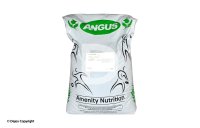
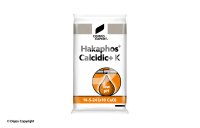




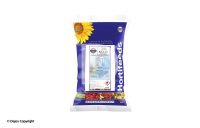

![UNIVERSOL ORANGE 16-05-25 S03+MgO+TE [Regulated Substance]](https://s3-eu-west-1.amazonaws.com/webshop/data/thumbs/6f/6f82f7ddf010b23ffb1ad177911d99b1f07bea96.jpg)
